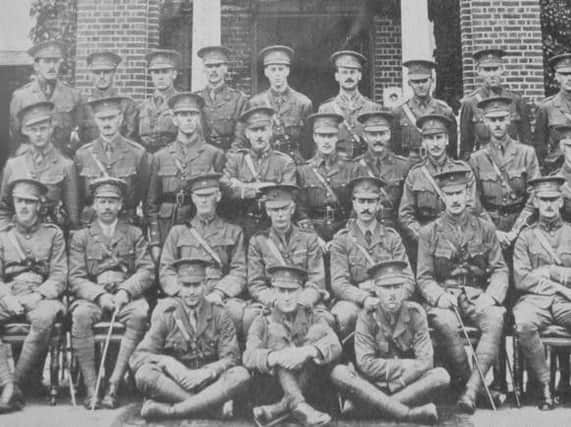Village cricket heroes who made the ultimate sacrifice


We have a family connection to the village in that our daughter, Helen, and son-in-law, Stuart Mouland, now live there with their three young daughters, Jessica, Sienna and little Annie. Stuart keeps wicket for the Ringmer cricket team who have just completed a successful season in the East Sussex Cricket League Division One. So you should not be surprised that my interest was at once aroused when I spotted references to Ringmer cricketers in Mr. Bridger’s book.
There is a stone tablet in the village church of St. Mary The Virgin that honours 28 members of the cricket club who “joined the Colours” as volunteers in World War One. The tablet goes on to record how three of them died “fighting victoriously” and after listing their names proudly proclaims that “They played the game”.
Advertisement
Hide AdAdvertisement
Hide AdThese days such words might jar as a bit jingoistic. But in the time of the Great War, British fair play in sport was often highlighted to demonstrate a moral superiority over the enemy. Patriotic female war poet Jessie Pope unashamedly featured sporting analogies in her work. Here’s an example:
“Our cricketers have gone ‘on tour’,
To make their country’s triumph sure.
They’ll take the Kaiser’s middle wicket
And smash it by clean British cricket.”
First name on the tablet is that of Captain Edward Hubert Charles Drouet Le Marchant. He had a family link to Glynde but served (as had his father) in the Hampshire Regiment. He died aged 22 on 29th October 1916 from wounds inflicted six days earlier during the Battle of the Somme.
Remember Bill Shankly’s famous remark about football being more serious than a matter of life and death? Well maybe he chose the wrong sport. I say this because Wisden (of Almanack fame) maintained a list of notable Great War cricketing casualties. For public schoolboy Edward they recorded: Captain Le Marchant “… was in the Harrow Eleven in 1913, being a useful batsman and bowler. Against Eton he scored 14 and took one wicket for 34 runs.”
Frank Miles Wilmshurst is also named on the tablet. He joined the Royal Sussex Regiment in March 1916 and was sent to France eight weeks later. In August 1917 he was hospitalized after a poison gas attack and several weeks later was grievously wounded in a bombing raid. On 22nd September, aged 20, Private Wilmshurst died. He is buried in Dozinghem Military Cemetery in Belgium. The tablet was funded by Frank’s father, William, proprietor of the village Post Office.
Advertisement
Hide AdAdvertisement